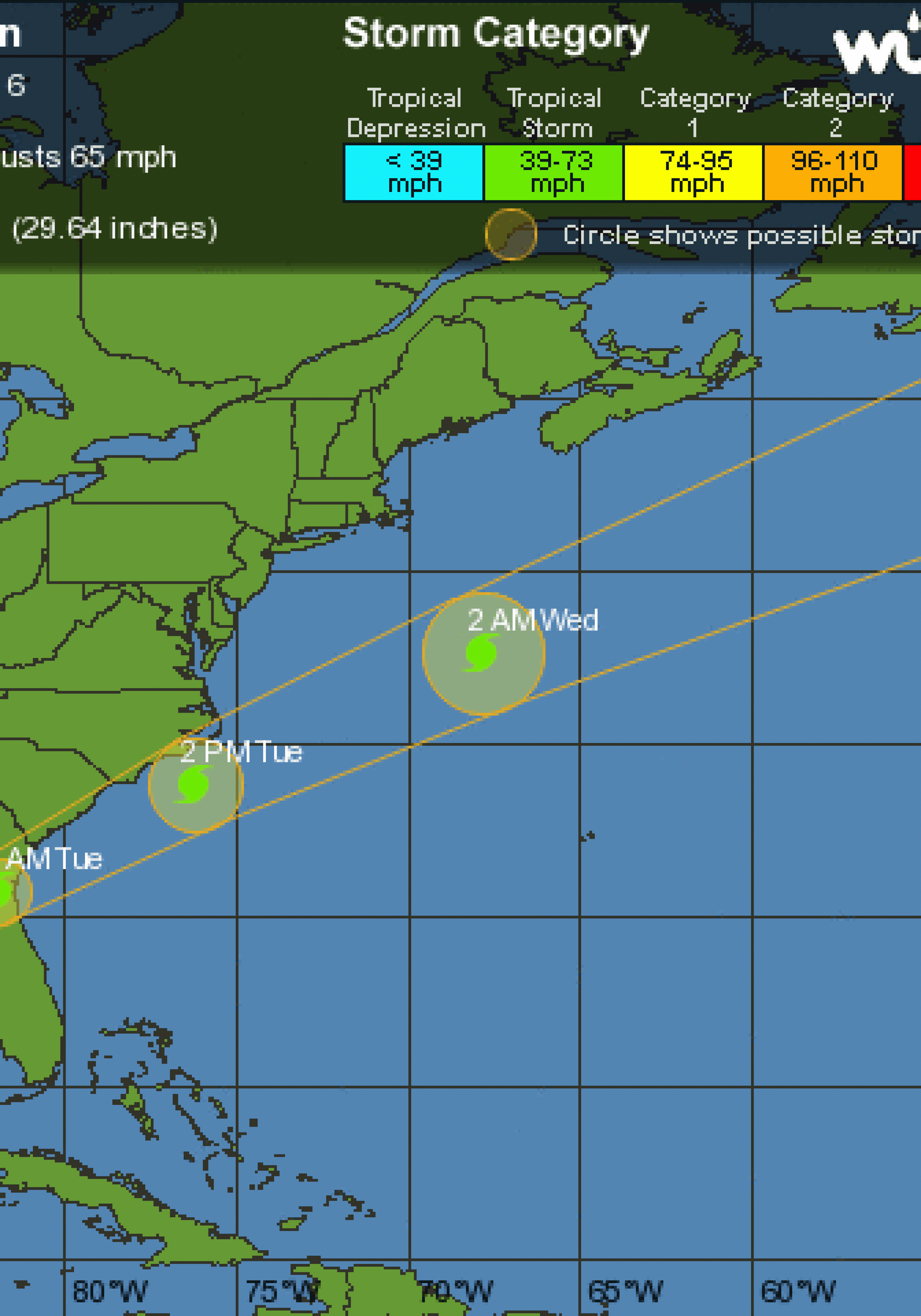
Residents on Florida’s Gulf coast filled sandbags, schools planned to close early and Gov. Rick Scott declared a state of emergency as Tropical Storm Colin gained speed and churned toward the state Monday, threatening serious flooding.
A large portion of Florida’s western and Panhandle coast was already under a tropical storm warning when the National Hurricane Center announced that a swift-moving depression had become a named storm. The center said it is the earliest that a third named storm has ever formed in the Atlantic basin.
Colin’s maximum sustained winds Monday morning had increased to near 50 mph (85 kph) with some slow strengthening possible during the next two days. The storm was centered about 285 miles (455 kilometers) west-southwest of Tampa and moving north-northeast near 16 mph (26 kph).
Early Monday, Ronald P. Milligan, 74, stopped by a park in St. Petersburg where authorities planned to distribute sandbags because the ditch in front of his home had filled during the previous evening’s rain.
“If last night was a ‘no storm’ – and the water was almost up to the hump in my yard – I’m worried,” Milligan said, motioning to about knee level. He’s lived in Florida since the late 1970s and hasn’t ever prepared for a storm this early.
Sandbags also were being distributed in Tampa and nearby cities.
The latest forecast for Colin called for the storm to make landfall near the Big Bend area of Florida in the mid-afternoon, move across the Florida peninsula into Georgia and then move along or just off the South Carolina coast before heading out to sea.
Schools in at least one Florida Gulf Coast county planned to dismiss students early Monday. Pasco County said schools would be letting out, and it was likely that county government would shut down around noon to get people off the road by 3 p.m.
Farther north at Cedar Keys National Wildlife Refuge, the storm’s arrival this afternoon was due at the same time as high tide, creating even higher risk of severe flooding, said Andrew Gude, manager of the refuge for the U.S. Fish and Wildlife Service.
“We’re taking chain saws home so we can cut our way out of our neighborhoods and cut our way back into work tomorrow,” Gude said.
Colin is expected to produce rainfall amounts of 3 to 5 inches, and forecasters said up to 8 inches are possible across western Florida, eastern Georgia and coastal areas of the Carolinas through Tuesday.
Forecasters said storm surge and high tide could combine to flood normally dry areas along Florida’s coastline. They also described Colin as a lopsided storm, with tropical storm-force winds extending up to 185 miles east of its center.
A tropical storm warning was also in effect for the entire Georgia coast and the lower South Carolina coast.
Meanwhile, Gov. Rick Scott postponed a political meeting with presumptive Republican presidential nominee Donald Trump scheduled Monday in New York so he can remain in the state capital to monitor the weather.
Scott warned residents not to simply look at the center of the storm, saying the heaviest rain will be to the east and west of it.
Colin was expected to pass the Georgia coast before dawn Tuesday, said Dennis Jones, director of the Chatham County Emergency Management Agency.
Jones said flash floods appeared to pose the greatest threat, with the worst flood potential expected late Tuesday when local waterways already swollen with rain crest with the high tide.
Allan Giese, 62, watched the start-and-stop rains Monday morning from his home about 150 yards from the St. Marys River, where he’s seen larger storms bang up boats anchored in the nearby marina. He planned to bring his plywood work table inside, but otherwise simply ride out the storm inside with his wife.
“What it sounds like is just some heavy rains, but nothing torrential, not high winds,” Giese said. “We’ll just keep an eye on the tracker, go to bed and hunker down.”


